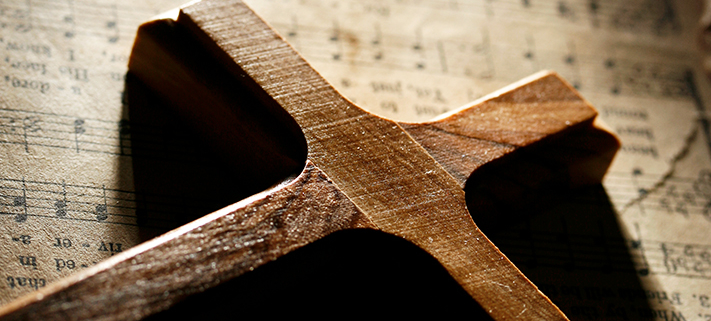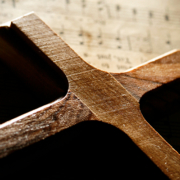For the Lord’s glory
The new hymnal will be filled with hymns that will encourage a new generation to sing the gospel.
Aaron L. Christie
The end of the year is a prime time to survey the Lord’s blessings over the last 12 months. The end of this particular year is also a prime time to look back over the life of the WELS Hymnal Project. Why? Because by the time you read this article, 655 hymns will be in the hands of Northwestern Publishing House.
Some of these hymns will come directly from Christian Worship: A Lutheran Hymnal with no changes. Others will come from Christian Worship, but with changes— sometimes significant ones. Stanzas have been added or subtracted. Musical harmonies have generally been simplified. A little over one-third of the book will be “new.” New doesn’t mean that these hymns were written in the 21st century. It simply means they are “new to us.” Some of them come from the age of Lutheran orthodoxy and have been freshly translated so that they can speak clearly to our age of postmodern relativism. Others have been written within the last decade.
In short, our “new” hymnal will contain much that is old, some that is new, and some new that is really quite old!
Looking back at the work
Looking back on the work of the Hymnody Committee, one is filled with thanks to the Lord for the blessings he has poured out upon our small synod. The committee is filled with men and women who not only appreciate the poet’s art but are dedicated to the catechism’s content. They are at home with the music of Bach yet eager to expose our synod to the best our modern age can muster. All the members of the Hymnody Committee have “both feet in the parish.” And this is by design. In a very real way, the new hymnal was developed in the pulpits, classrooms, balconies, practice rooms, and pews across our synod. The hymnal’s text and music subcommittees met via computer almost one hundred times each. They prepared hymn texts and musical settings for the project’s Executive Committee that met face-to-face 22 times. Thousands of hours of preparation and months of meetings all total up to years of labor invested in a new hymnal for the next generation.
Looking back, WELS members should know that decisions were not made lightly. When we work with hymns, we are working with precious objects from the church’s history. Even more, we are working with the priceless truths of the gospel. The Hymnody Committee searched through dozens of hymnals, books of religious poetry, and websites. Over the last six years, their eyes have viewed literally tens of thousands of hymns. Of those, more than four thousand were voted upon at the subcommittee, Hymnody Committee, or Executive Committee level. Roughly 1,900 hymns received more thorough review. Of those, 900 received full text and musical treatment. Of those 900, the best 655 were awarded a place in the new hymnal. These 655 hymns were chosen with the knowledge that for every hymn that was voted “in,” another dearly loved hymn was now “out.” The Hymnody Committee tried its best to be stewards of the church’s treasures and the gospel’s truth. The gospel is precious. God’s people are precious. God’s people need and God’s people deserve hymns that put the gospel in their mouths, ring the gospel in their ears, and sing the gospel into their souls. That’s the goal of Lutheran church music. The results of our work, we commend to the Lord and his church.
Looking back over the last several years means viewing years of hard work, thousands of decisions, hundreds of detailed conversations, plenty of professional disagreement, and ongoing evangelical encouragement.
Looking forward to the hymnal’s release
Looking forward, what can you expect when you crack open the new hymnal for the first time?
You will immediately notice that many of the musical harmonies are simpler than Christian Worship. This means that many of the hymns have been set to enable singing in harmony. But you will also note that more than 70 hymns will be printed with “melody only”—no parts at all. Why? Some of the hymns are intended by their composers to be “melody only.” Other hymns can save previous pages by placing the melody in the hymnal and the accompaniment in the forthcoming Accompaniment Edition. As you delve deeper into the book, you will notice that fewer hymns have two different melodies. Basses and altos will gladly discover that some keys have been lowered to a more “comfortable” singing level.
Musicians will be pleased to hear that the hymnal has been designed to be the singer’s book. The Accompaniment Edition has been designed to be the keyboardists’ book—packed with alternate harmonizations and festival settings. The Musicians Resource, an electronic-only product, will provide instrumental parts for all the hymns in the hymnal.
The point? The new hymnal stands at the top of a pyramid of musical resources that will support the singing of God’s people on several different levels.
Dreaming forward
This leads us to dreaming forward just a bit:
Imagine a book that sings of Christ crucified and raised to life again, a book that helps Lutherans teach Christ to the next generation, that enables them to proclaim the gospel in their worship and inspires them to confess Christ to a dying world.
Imagine a book that contains the treasures of the church’s past with the riches of the church’s present.
Imagine a book that takes our Lutheran heritage seriously and considers our place in modern society thoughtfully.
Imagine a hymnal that encourages people to sing, keyboardists to play, and musicians to make music in God’s lovely dwelling place.
Imagine a generation of children that puts down their phones—just for a few minutes!—and opens up a hymnal to listen, to learn, and to sing, as they prepare to pass on the faith to their own children.
Imagine a church that goes against the grain of American consumerism. A church that understands that music is not something simply to be purchased and consumed, but that it is God’s gift, something that we make together as members of one family of believers.
Imagine gospel-rich hymns strengthening the church’s unity.
It has been said, “Preach the gospel. Use words if necessary.” This saying fundamentally confuses law and gospel. It divorces the gospel from the message of the gospel and places a Christian’s deeds ahead of Christ’s saving deeds. Instead, I hope that the new hymnal will encourage a new generation to “Sing the gospel. Use notes if necessary.” As we do this, we are doing precisely what the Spirit commanded the Colossians to do: “Let the message of Christ dwell among you richly as you teach and admonish one another with all wisdom through psalms, hymns, and songs from the Spirit, singing to God with gratitude in your hearts” (Colossians 3:16).
What will be in the new book? No, even better: Who will be in the new book? Jesus will be. And that makes me dream sweet dreams for the church’s future!
Aaron Christie, the Hymnody Committee chairman of the WELS Hymnal Project, is pastor at Trinity, Waukesha, Wisconsin.
Learn more about the WELS Hymnal Project at welshymnal.com.
This is the second article in a three-part series on the new hymnal being released in Advent of 2021. Look for the next article in February 2020.
SUBMIT YOUR STORY
Do you have a manuscript, idea, or story from your own life you’d like to share for use in Forward in Christ or on wels.net? Use our online form to share it to our editorial office for consideration.
SUBSCRIBE TO FORWARD IN CHRIST
Get inspirational stories, spiritual help, and synod news from Forward in Christ every month. Print and digital subscriptions are available from Northwestern Publishing House.
Author: Aaron L. Christie
Volume 106, Number 12
Issue: December 2019
Copyrighted by WELS Forward in Christ © 2021
Forward in Christ grants permission for any original article (not a reprint) to be printed for use in a WELS church, school, or organization, provided that it is distributed free and indicate Forward in Christ as the source. Images may not be reproduced except in the context of its article. Contact us






